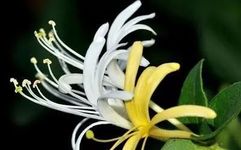Author: Yi Meng
With vines named Mandarin Ducks
Not born of human kind
Golden flowers between silver stamens
Green vines grow in clusters
—— Song Dynasty poet Duan Ke: “Honeysuckle”
The vine named Mandarin Duck, entwined with deep affection, is because of honeysuckle, always like Mandarin Ducks closely dependent on each other, blooming in pairs and falling in pairs. This is also one of the flower languages of honeysuckle, which contains the meaning of Mandarin Ducks being paired and kind-hearted.
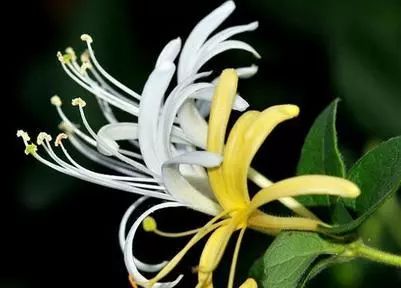
Honeysuckle, also known as silver flower, double flower, two treasure flower, and Lonicera, is the flower bud of the perennial semi-evergreen climbing woody plant honeysuckle (Lonicera japonica), which is distributed throughout the north and south of China.
The “Compendium of Materia Medica” describes the morphology of honeysuckle: “In March and April, flowers bloom, about an inch long, with two flowers on one peduncle, (one flower) with two petals, one large and one small, resembling a half side. Long stamens. When the flower first opens, both the petals and stamens are white; after two or three days, they turn yellow.”
Traditional Chinese Medicine (TCM) believes that honeysuckle is sweet and cold in nature, entering the lung, stomach, and large intestine meridians, with functions of clearing heat and detoxifying, dispersing wind-heat, cooling blood and stopping bleeding. This herb has excellent heat-clearing and detoxifying effects, and has a mild dispersing effect, thus it is very effective for heat toxin carbuncles, sores, sore throat, external wind-heat or initial stages of warm diseases, and heat toxin dysentery, making it a good medicine for summer.
Pharmacological studies show that honeysuckle is a strong broad-spectrum antibacterial herb, inhibiting various pathogenic organisms such as bacteria and viruses; it has anti-inflammatory and antipyretic effects; it can enhance the body’s defense mechanisms and reduce blood lipids, promoting the secretion of gastric and bile fluids.Today, it is also known as the “National Treasure Flower” and “the antibiotic of traditional Chinese medicine.”
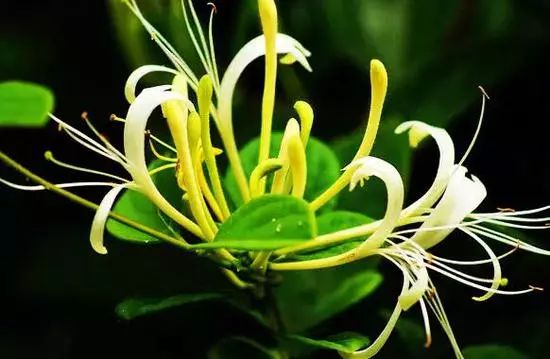
Identification points of honeysuckle:
It is rod-shaped, thicker at the top and thinner at the bottom, slightly curved, 2-3 cm long, with an upper diameter of about 3 mm and a lower diameter of about 1.5 mm. The surface is yellow-white or green-white (the color deepens with storage), densely covered with short soft hairs. Occasionally, leaf-like bracts are seen. The calyx is green, with five lobes at the tip, the lobes are hairy, about 2 mm long. The open flower has a tubular corolla, with a two-lipped tip; there are five stamens attached to the wall of the tube, yellow; one pistil, with a hairless ovary. It has a clear fragrance, with a mild, slightly bitter taste.
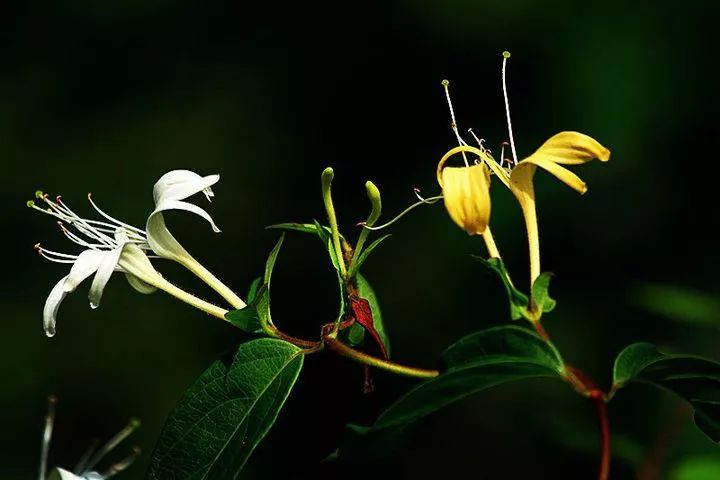
The story of honeysuckle:
It is said that a long time ago, there was a village plagued by an epidemic, with patients vomiting and having diarrhea, dying within a few days. In the village, there was a beautiful girl named “Honeysuckle,” who not only was skilled in needlework but also could diagnose and prescribe medicine. Seeing the villagers suffering from the epidemic, Honeysuckle offered her family’s ancestral secret recipe, providing medicine to the poor, and soon the epidemic was brought under control. From then on, Honeysuckle became famous far and wide.
One wealthy man learned of this and, taking advantage of his power, tried to force her into marriage. Honeysuckle tragically died when she hit her head against a stone pillar. To repay Honeysuckle’s kindness, the villagers buried her in the most beautiful place, and later, many golden and silver flowers bloomed on her grave, bright and fragrant, and everyone often weeded, watered, and fertilized it. To commemorate the girl Honeysuckle, they named this flower “Honeysuckle.”
The following year, an eye disease spread in the village, and someone dreamed of the girl Honeysuckle. She told everyone: “Uncle and Aunt, listen clearly, Honeysuckle can cure all diseases; Uncle and Aunt, listen clearly, Honeysuckle can cure eye diseases.” So the villagers used honeysuckle to brew water for fumigation and washed their eyes, curing the eye diseases. Everyone tried it, and it was indeed effective.
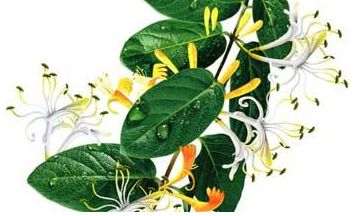
Applications and Efficacy of Honeysuckle:
1. Dispersing Wind-Heat
Honeysuckle is cold and disperses, capable of dispersing external wind-heat evil. It is used to treat wind-heat colds, initial stages of warm diseases, with symptoms such as fever, slight aversion to cold, sweating, headache, sore throat, thirst, red tongue tip, and floating rapid pulse.
For example, Yin Qiao San uses this as the monarch herb, combined with Lian Qiao (Forsythia), Niu Bang Zi (Burdock fruit), Jie Geng (Platycodon), Gan Cao (Licorice), Jing Jie (Schizonepeta), Zhu Ye (Bamboo leaves), Bo He (Mint), and Lu Gen (Reed rhizome), mainly treating wind-heat.
Modern research shows that this herb has antiviral, anti-meningococcal, anti-spirochete, anti-inflammatory, and antipyretic pharmacological effects.
2. Clearing Heat and Detoxifying
Honeysuckle is a key herb for treating heat toxin sores and ulcers.
The “New Compilation of Materia Medica, Volume Two” points out the characteristics of honeysuckle in detoxifying and treating sores: “It enters all meridians, a divine product for detoxification; if the toxin has not formed, it disperses; if the toxin has formed, it eliminates it; it can revive the dying and turn the bad into good. Therefore, for carbuncles and sores, this herb must be used as a life-saving elixir. However, its taste is pure and mild, and it nourishes yin; although it is good at detoxifying, its effect is very slow, so it must be used in large quantities.”
“The detoxifying effect of honeysuckle is divine, and it should be used abundantly, which is indeed a conclusion established for thousands of years. For carbuncles, use up to 7-8 taels, add 5 qian of Gan Cao and 2 taels of Dang Gui, decoct as one dose, and there has never been a case where it did not disperse immediately. For other toxins on the body, head, and feet, reduce by half, and it is effective.” The book also introduces the decoction method for large doses of honeysuckle: “If you find honeysuckle too much and difficult to decoct, you can first take more than ten bowls of water, decoct to extract the juice of honeysuckle, then decoct Dang Gui and Gan Cao, which is particularly effective.” This decoction method is what is now referred to as the “decocting soup instead of water” method, which can be referenced.
Modern research shows that this herb has broad-spectrum antibacterial effects.
3. Clearing Heat and Stopping Dysentery
When heat toxins accumulate in the large intestine, leading to dysfunction of the large intestine, symptoms such as fever, abdominal pain, and dysentery with pus and blood, honeysuckle can be used to clear heat and detoxify, cool blood, and stop dysentery, combined with Bai Tou Weng (Pulsatilla), Huang Lian (Coptis), Huang Bai (Phellodendron), Qin Pi (Fraxini Cortex), Mu Xiang (Aucklandia), Bai Shao (White Peony), and Ma Chi Xian (Portulaca). Honeysuckle should be used half raw and half charred; the raw part focuses on detoxification, while the charred part focuses on stopping dysentery.
Modern pharmacological studies have shown that this herb has effects against typhoid bacilli, paratyphoid bacilli, dysentery bacilli, E. coli, and Pseudomonas aeruginosa.
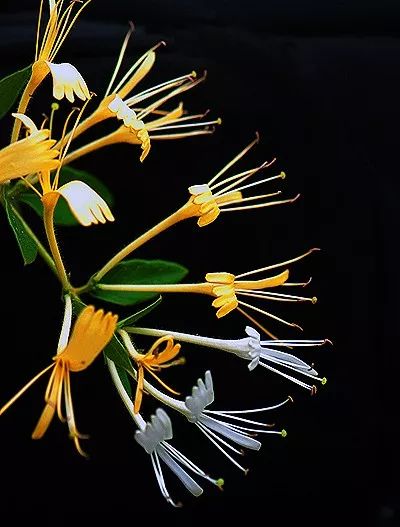
Common Combinations of Honeysuckle:
▌Honeysuckle with Lian Qiao
Both herbs can disperse wind-heat and clear heat and detoxify; their combined application can enhance efficacy, commonly used to treat wind-heat colds, initial stages of warm diseases, and heat toxin sores, as in Yin Qiao San.
▌Honeysuckle with Gan Cao
Honeysuckle excels in clearing heat and detoxifying, while Gan Cao functions to tonify the spleen and qi, clear heat and detoxify, and moderate the properties of herbs; their combination clears heat and detoxifies without harming the righteous qi, commonly used for treating sores and swellings. For example, the Yin Hua Gan Cao Decoction from “Medical Insights, Volume Six, Surgical Symptoms and Treatment” includes: “Two taels of honeysuckle, two qian of licorice, decoct in water, and take with clear wine. … It treats the initial stages of swelling and toxins, and can immediately disperse; taking this medicine internally and applying Yuan Zhi ointment externally, all evils will disperse.”
▌Honeysuckle with Ren Shen
Honeysuckle detoxifies and eliminates sores, while Ren Shen (Ginseng) greatly tonifies the original qi; their combination can simultaneously support the righteous and expel the evil, treating sores with both excess evil and deficiency, and when the sore is worsening and the righteous qi is insufficient. The “New Compilation of Materia Medica, Volume Two” states: “When the back sore develops to the point of ‘pain and itching unknown, and feeling faint and unaware, not wanting to eat or drink, hanging life by a moment, waiting for death in an instant, if one can use one jin of honeysuckle, together with five or six taels of ginseng, decoct the juice and drink it, it will surely save the life that is on the verge of death, and restore the spirit that has already flown away.”
▌Honeysuckle with Dang Gui
Honeysuckle clears heat and detoxifies sores, while Dang Gui nourishes blood and activates blood circulation; their combined use can detoxify and invigorate blood, and prevent the loss of yin blood due to pus and bleeding, commonly used for treating heat toxins accumulating in the blood, with sores and swellings, which can be combined with Xuan Shen (Scrophularia), Gan Cao, etc., as in Si Miao Yong An Decoction, treating bone sores (thromboangiitis obliterans).
Several Recipes for Honeysuckle:
1. Treating Oral Ulcers
50g of honeysuckle, soak in 500mL of boiling water at 100°C for 30 minutes or decoct for 10 minutes, cool and filter. Use the honeysuckle infusion together with saline, first gargle with saline, then use the honeysuckle infusion.
Gargling method: After taking the gargling liquid, tilt your head back to let the liquid flow to the throat, hold for 30 seconds, then let the liquid stay in the mouth for 2-3 minutes, and then slowly spit it out.
2. Treating Biliary Tract Infections and Wound Infections
50g of honeysuckle, 25g each of Lian Qiao, Huang Qin (Scutellaria), Wild Chrysanthemum, and Da Qing Gen (Isatis root). Decoct and take one dose daily.
3. Treating All Swellings and Toxins
Half a bowl of natural juice from honeysuckle (with stems and leaves), decoct to 80% and take, apply the residue externally, dispelling toxins and harmonizing qi and blood, with unique efficacy.
4. Treating Skin and Foot Ringworm
Prescription: 30g of Ku Shen (Sophora), 9g of Zhi Qiao (Bitter Orange), 9g of Gan Cao, 15g of Honeysuckle, and 15g of She Chuang Zi (Cnidium).
Method: Decoct and soak the affected area. 2-3 times daily, each time for about 30 minutes.
This formula has good effects on eczema, dermatitis, psoriasis, and fungal vaginitis.
The main effective component of honeysuckle is chlorogenic acid. Studies have found that the content of chlorogenic acid in honeysuckle decreases by 10% each year, so when using this herb, attention should be paid to using fresh stock from the current year. Prolonged storage reduces the content of effective components, weakening its medicinal properties, which should be noted clinically. Additionally, honeysuckle, also known as Lonicera, has the effect of clearing wind-heat from the meridians and relieving pain; clinically, it can not only replace honeysuckle in dispersing heat and detoxifying but can also be used for rheumatic heat bi syndrome with joint redness, swelling, heat, and pain, and difficulty in flexion and extension. The common dosage of honeysuckle is 6-15g. The “New Compilation of Materia Medica, Volume Two” states: “Using less will tonify more than attack, using more will attack more than tonify,” which can be referenced.
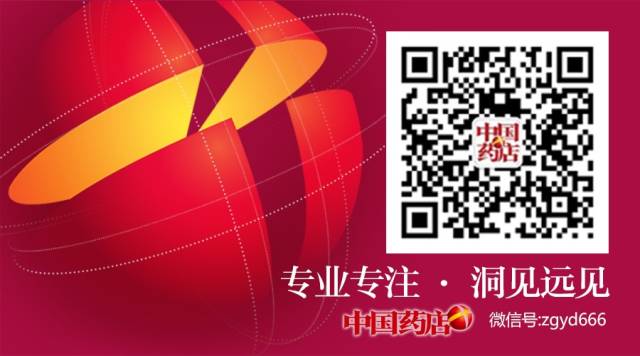
Long press the image for 3 seconds to scan the QR code to follow
Dear, the Chinese pharmacy public account is continuously collecting articles. If you want to express your thoughts, record your life, share your experiences… you can send your works in text or image form to [email protected] (email), compensation=200 yuan + reading volume * 0.01 yuan. Warm reminder, please indicate your contact information when submitting.
If you like it, please give it a thumbs up! ↙

